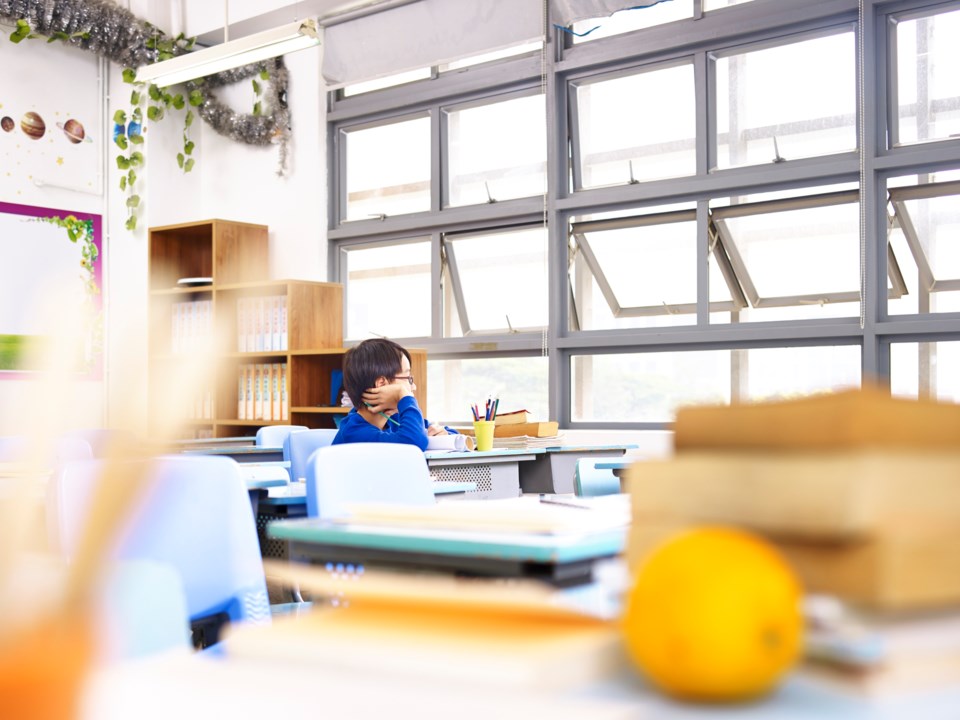After years of urging schools to curb their energy consumption, the Burnaby school district expects to spend $900,000 more than anticipated on heating bills this year so it can pump more cold, fresh, COVID-free air into its buildings.
Secretary-treasurer Russell Horswill presented a first-quarter budget update at a school board meeting last week.
In it were numbers showing the extra costs and funding associated with the district’s COVID-19 response.
To help prevent the spread of COVID, Horswill told the NOW the district has modified its heating and ventilation systems to bring in more outdoor air, which then needs to be heated.
For classrooms without a heating and ventilation system, the district is requiring doors and windows to remain open to the outside air, according to Horswill.
“While we’ve had a great focus over a number of years around energy efficiency and trying to reduce our greenhouse gases and budget, what we’re anticipating this year around our COVID response is a much greater heat demand because of the amount of fresh air we’re bringing into the classroom as one of our strategies around COVID mitigation,” Horswill said.
The heating bill is just one extra pandemic-related cost that will have to be added to the 2020/21 budget
'Separate buckets of money'
In total, the district has budgeted an extra $10.6 million to pay for its COVID response. Those costs will be paid for with targeted provincial and federal “safe return to school” grants totalling more than $10.4 million, a mental health grant and $1 million from the district’s reserves.
Most of the money will pay for about 84 extra teachers ($6.4 million) and 42 extra support staff ($1.6 million), mostly custodians and labourers, according to Horswill.
He said some of the extra teachers will provide English language learning and mental-health support, but the majority will be working with students, including immune-compromised students, in a number of COVID-specific programs outside of the traditional classroom setting.
When those students transition back to the classroom, the extra teachers will move onto the district’s teacher-on-call list, Horswill said.
The extra teachers are not being funded through the district’s regular operating budget but with targeted COVID funds, according to Horswill.
“Separate buckets of money, is really what it is,” he said.
The district actually had to cut 43 teaching positions and 17 education assistant positions from its operating budget because of lower than expected enrolment.
Regular kindergarten to Grade 12 enrolment was 341 lower than anticipated in the 2020/21 budget approved in June, according to Horswill’s first-quarter report.
There were also 163 fewer students with special education and other unique student designations than projected.
That has added up to a $4.9-million decrease in regular funding from the province that the district had to offset by cutting teacher and EA positions.
Between the “separate buckets of money,” however, there is a net increase in teaching positions of about 41.
Enrolment drop
Horswill said the district isn’t yet sure why enrolment came in so much lower than projected and whether the drop was due to COVID.
Some of the students likely stayed home, as reflected in 72 more than expected registering as homeschoolers in the district, 98 more than expected registering with the district for online learning and one more than expected opting for an alternative school.
What happened to the rest of the students the district expected is something that will be investigated later in the year, according to Horswill.
“We generally do a review to find out what happened,” he said. “It certainly doesn’t happen in September or October, but more later on when we’re doing future enrolment projections, we’ll try to understand what happened in this case.”
The fewer than predicted special needs students is another thing the district will have to unpack, he said.
“We believe it could be that some assessments weren’t done of kindergarten children coming in,” Horswill said. “This could be a COVID impact as well, that the external people that do these assessments, organizations that do these assessments because of COVID may not have had an opportunity to assess the students.”
To sum up the financial impact of COVID-19, Horswill told trustees the district is in good shape after some adjustments for the drop in enrolment and the extra targeted funds from the province and feds.
“The report to the board is really to indicate that our operating budget is in a good position,” he said. “It’s indicating that it will be balanced based on your plan, and you can see how we’ve moved forward with the COVID-19 funding that’s been received.”
Follow Cornelia Naylor on Twitter @CorNaylor
Email [email protected]



